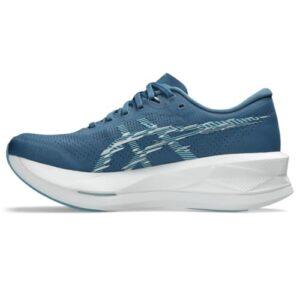Have you ever wondered how long your favorite pair of sneakers will last? You probably rely on them every day, whether for walking, running, or just casual wear.
But do you know when it’s time to replace them before they start causing discomfort or even injury? Understanding the lifespan of your sneakers can save you money and keep your feet happy. Keep reading, and you’ll discover key signs to watch for and simple tips to get the most out of every step you take.
Sneaker Lifespan Factors
The material qualityof sneakers affects how long they last. Shoes made with strong leatheror durable fabricslast longer than those with cheap materials. The frequency of usealso plays a big role. Sneakers worn every day wear out faster than those used only sometimes.
The type of activitymatters too. Running or sports can wear out shoes quicker than walking or casual use. Sneakers used for sports need more care and often replace sooner.
Environmental conditionslike rain, mud, and heat can damage sneakers faster. Keeping shoes dry and clean helps them last longer. Good care improves their lifespan a lot.
Signs Sneakers Need Replacing
Worn out solescause less grip and can lead to slips. Check the bottom of your sneakers for smooth areas or holes. Loss of cushioningmakes feet hurt after walking or running. If sneakers feel hard or flat, they need replacing.
Visible damagelike tears, cracks, or loose parts shows the shoes are worn out. This damage lowers support and comfort. Unpleasant odorsthat don’t go away with cleaning mean bacteria or mold inside. This can cause foot problems and means it is time for new sneakers.
Extending Sneaker Durability
Proper cleaningkeeps sneakers fresh and lasts longer. Use a soft brush or cloth to remove dirt. Mild soap and water work best. Avoid harsh chemicals that can damage materials. Let shoes air dry naturally. Never put them in direct sunlight or a dryer.
Effective storagestops damage and keeps shape. Store sneakers in a cool, dry place. Use shoe trees or stuff them with paper to keep form. Avoid stacking heavy items on top to prevent squashing.
Rotating pairshelps shoes last. Wearing different sneakers each day reduces wear. This gives shoes time to dry and recover.
Protective spraysguard against water and stains. Spray evenly before first use and repeat regularly. Choose sprays suited for your sneaker material.
:max_bytes(150000):strip_icc()/vwt-altra-mens-paradigm-7-ray-yeung-13-c698415259dc400eaf622e94b511f5bf.jpeg)
Credit: www.verywellfit.com
Choosing Sneakers For Longevity
Durable materialshelp sneakers last longer. Look for leather, mesh, or strong synthetic fabrics. These materials hold up better over time and resist wear. The sole should be thick and made from rubber or foam that does not wear down fast.
Brands with a good reputation often use better materialsand careful construction. This leads to longer-lasting shoes. Some brands focus on quality more than style or price.
Fit and comfortare very important. Shoes that fit well cause less damage to your feet and last longer. Sneakers that are too tight or loose can wear out faster. Proper fit means your feet feel good and the shoes stay in shape.
When To Retire Your Sneakers
Worn-out sneakerscan hurt your feet. Old shoes lose their cushion and support. This may cause pain in your feet, knees, or back. Shoes that are too soft or too hard can make walking or running difficult.
Performance drops as shoes wear down. The grip on the soles fades, making slips more likely. The shoe shape can change, affecting your balance and speed. Sneakers lose their bounce over time, making exercise less comfortable.
| Cost | Repair |
|---|---|
| New sneakers usually cost less than fixing old ones. | Fixing worn soles or torn fabric can be expensive. |
| Investing in new shoes gives better support and safety. | Repairs might not restore full comfort or performance. |

Credit: www.youtube.com

Credit: www.gq.com
Frequently Asked Questions
How Long Do Sneakers Typically Last With Regular Use?
Sneakers usually last between 300 to 500 miles of wear. For most people, this translates to about 6 months to 1 year. Factors like activity type and walking style affect their lifespan. Proper care can also extend their usability.
When Should I Replace My Sneakers For Running?
Replace running sneakers when the cushioning feels less supportive. Visible sole wear or discomfort during runs also signal replacement time. Using worn-out sneakers increases injury risk. Regularly checking tread and midsole helps decide when to upgrade.
Can Sneaker Lifespan Vary By Brand Or Material?
Yes, sneaker lifespan varies by brand, design, and materials used. High-quality materials and advanced technology often enhance durability. Some brands focus on lightweight design, which may reduce longevity. Always consider brand reputation and materials when buying.
How Does Sneaker Usage Affect Their Durability?
Sneakers used for intense sports wear out faster than casual use. Running, basketball, or hiking puts more stress on shoes. Daily walking or light activities cause less damage. Usage frequency and activity type directly impact sneaker lifespan.
Conclusion
Sneakers last longer with proper care and regular use. Watch for signs like worn soles or loss of support. Replace them to avoid foot pain or injuries. Quality and how often you wear them affect their lifespan. Keep your sneakers clean and dry to extend their life.
Choose the right time to get a new pair. Your feet will thank you for it. Sneakers are important for comfort and style every day. Take good care, and they will serve you well.

Madison Clark is a footwear expert and the voice behind MyStyleGrid.com. She specializes in honest shoe reviews, style tips, and practical guides to help readers find the perfect pair for any occasion. With years of experience in blogging and content creation, Madison makes footwear knowledge simple, stylish, and easy to follow.






